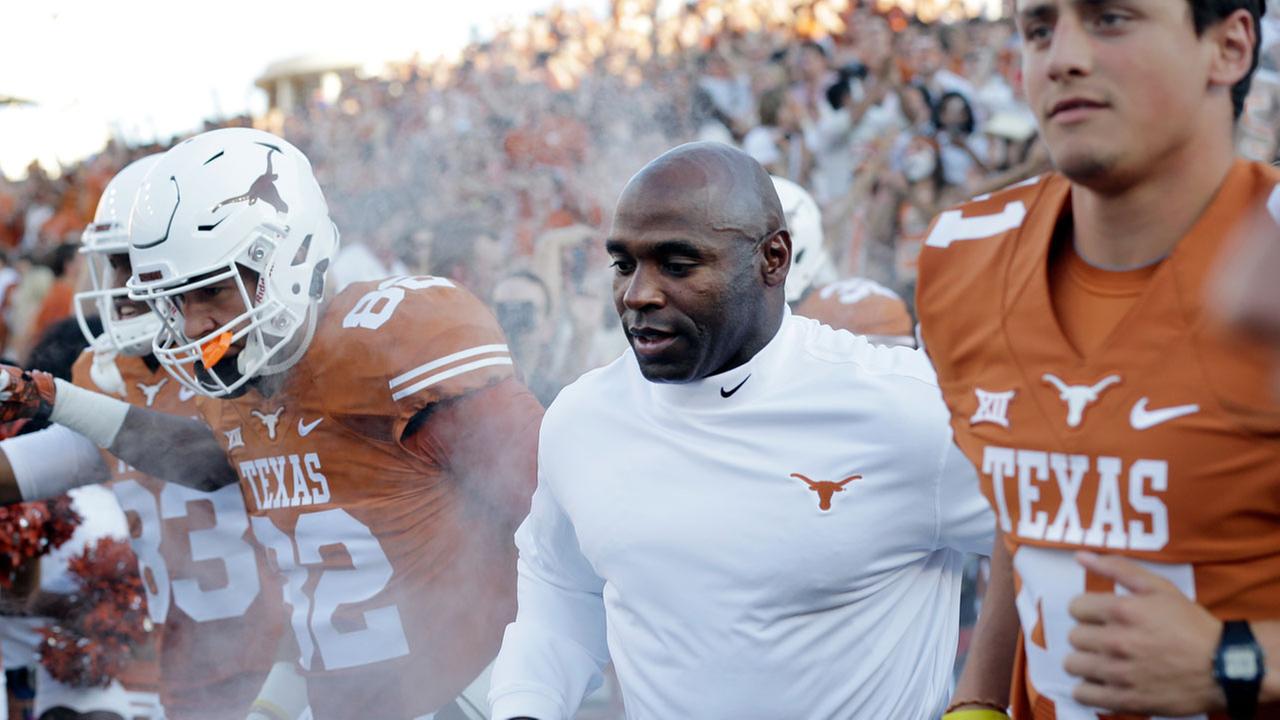Slow and agonizing.
It was as if you were watching a three-season tenure slowly melt away. Once you saw Kansas defensive back Mike Lee intercept Texas quarterback Shane Buechele, it was an end to a story. As the Kansas Jayhawks kicked the game-winning field goal this past Saturday to give the 2-9 Jayhawks a 24-21 win in overtime, the loss truly felt like a door had been shut on Charlie Strong and his time as head coach at the University of Texas. Some speculated that the inevitable termination will happen after the season finale against TCU on Friday. Others felt it would come as soon as possible. Regardless, there were few who felt that Charlie Strong would remain as head coach of the Texas Longhorns and that was evident today as the news of his eventual firing became a little clearer:
BREAKING: Texas has decided to fire Head Coach Charlie Strong. (Via @McMurphyESPN & multiple reports) pic.twitter.com/fT9X6xcZPC
— FOX Sports Radio1340 (@1340AMFOXSports) November 21, 2016
So the ultimate question surrounding Strong and his 36 games as head coach of the Texas Longhorns is simple: What happened?
While there are many speculations, rumors, and reasons, one thing is for sure, being a head coach at the University of Texas is entirely different in terms of circumstances and expectations. A 16-20 record in three seasons at Iowa State or Indiana or even UConn might be met with a little more optimism than having that same record at Texas. This is the same institution that had 16 seasons of services from former head coach Mack Brown that resulted in a 134-34 record, nine bowl wins, six Big 12 division titles, two Big 12 conference titles, one national title, and only one losing season. Extremely large shoes to fill for Strong, who prior to accepting the Texas job in January 2014, only had four full seasons as a head coach in the collegiate ranks.
The rhetoric has been built over the years that Strong had less room for error due to the color of his skin. Strong was the first African-American coach in the university’s history, dating all the way back to 1893. That notion is debatable and I won’t speculate much on that here. However, by obtaining the title as the head coach for the Longhorns, winning and consistency was expected from day one.
Many coaches need time. Time to establish their blueprint, their identity, their fingerprint. Strong has had relatively three full recruiting classes which resulted in rankings of 20th (2014), 12th (2015), 7th (2016). While recruiting rankings do not entirely reveal the skill and ability of a player or an entire recruiting class, it does indicate that the class has a considerable amount of talent. The problem for Strong was never GETTING talented players. He has built a reputation for being one of the best recruiters in all of college football before he was even hired as Texas head coach.
Becoming the leader of a football program at a historic institution such as Texas is never an easy transition. From the introductory press conference, Strong has had to juggle so many things with only two hands during his three seasons. Who can forget Strong dismissing a large number of players, including starters, from the team in his first training camp as head coach due to disciplinary reasons? Not only dealing with that but also taking over a Texas program around the same time when Texas A&M, Baylor, and TCU were all experiencing consistency as some of the best teams in the country, stir that having to operate on a defense that was 107th in 2015 and currently ranking 97th in overall defense, sprinkle in the constant push to win and win big while enduring lopsided losses to BYU (41-7, 2014), Iowa State (24-0, 2015), TCU (48-10, 2014/ 50-7, 2015) and an embarrassing loss to a one-win Kansas team and you have a recipe for disaster.
